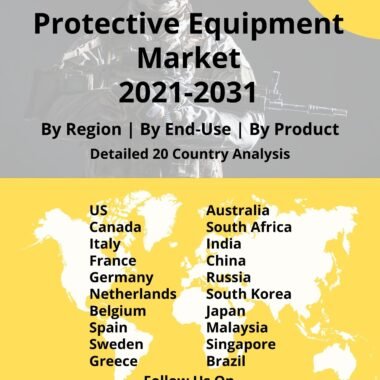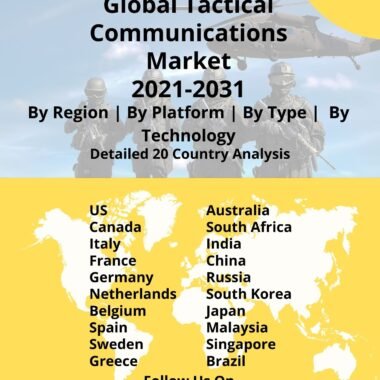Description
SAR Satellite Market
Frequently Asked Questions of Global SAR Satellite Market
Synthetic Aperture Radar (SAR) satellites are remote sensing satellites equipped with SAR sensors that use radar technology to capture high-resolution images of the Earth’s surface. Unlike optical sensors that rely on visible or infrared light, SAR satellites utilize microwave frequencies to penetrate clouds, darkness, and even some types of vegetation. Synthetic Aperture Radar works by emitting microwave signals from the satellite towards the Earth’s surface. The signals bounce back and are collected by the SAR sensor, which measures the time it takes for the signals to return. By analyzing the phase and amplitude of the returned signals, SAR satellites can generate detailed images of the Earth’s surface.
SAR satellites are capable of producing high-resolution images with details that can reveal features as small as a few meters. The resolution is determined by factors such as the frequency of the microwave signals, the size of the antenna, and the distance between the satellite and the target. SAR images can provide valuable information about land cover, topography, surface deformation, and changes over time. One of the significant advantages of SAR satellites is their ability to operate regardless of weather conditions or lighting. Unlike optical sensors that are limited by clouds, haze, or darkness, SAR can penetrate through these obstacles, making it suitable for imaging in areas with frequent cloud cover or during nighttime.
SAR imagery is used for land cover mapping, vegetation monitoring, and identification of changes in ecosystems. It helps in monitoring deforestation, coastal erosion, and land subsidence. SAR can also detect oil spills and assist in the assessment of natural disasters such as floods and earthquakes. SAR satellites have military applications, including surveillance, reconnaissance, and mapping of terrain for strategic purposes. They can detect and track moving objects, monitor border areas, and provide situational awareness in remote or hostile regions. SAR satellites are used to monitor infrastructure such as bridges, dams, pipelines, and roads. They can detect ground deformation and subsidence, identify potential hazards, and aid in the assessment of structural integrity.
Major factors driving SAR Satellite Market Growth
SAR satellites have significant applications in defense and military sectors. They are used for surveillance, reconnaissance, border monitoring, and mapping of terrains for strategic purposes. Governments worldwide are investing in SAR satellites to enhance their situational awareness and intelligence capabilities. SAR satellites are increasingly utilized in commercial sectors, including agriculture, forestry, mining, oil and gas exploration, maritime surveillance, and infrastructure monitoring. These industries leverage SAR imagery for monitoring and decision-making, leading to increased demand for SAR satellite services.
Trends influencing the SAR-Satellite Market Size
The SAR satellite market is witnessing the emergence of value-added services and data analytics. Companies are developing advanced analytics tools and platforms to process and analyze SAR data, providing customers with actionable insights and customized solutions tailored to specific industry needs.
SAR-Satellite Market Forecast & Dynamics
The SAR satellite market is served by several commercial operators that offer SAR imagery and data services. These companies include Airbus Defence and Space (TerraSAR-X and PAZ), Capella Space, ICEYE, and Cosmo-SkyMed. They provide access to SAR data through various delivery models, such as direct access, subscription-based services, and value-added analytics. The SAR satellite market is expected to witness continued growth and innovation. Advancements in SAR technology, expanding satellite constellations, and the integration of SAR data with other data sources, such as optical imagery and geospatial data, will further enhance the market’s capabilities and applications. The SAR satellite market forecast encompasses a thorough market analysis and assessment of market size. The analysis comprises an evaluation of regional market size, factors driving growth, constraints, and potential opportunities. Furthermore, the regional analysis also includes an examination of the market size specific to each country.
SAR Satellite Market Analysis for Recent Developments
ITOCHU Corporation (HQ: Minato-ku, Tokyo; President and COO: Keita Ishii; hereinafter referred to as “ITOCHU”) and SKY Perfect JSAT Corporation (HQ: Minato-ku, Tokyo; Representative Director, President & CEO: Eiichi Yonekura; hereinafter referred to as “SKY Perfect JSAT”) have jointly announced the initiation of a Synthetic Aperture Radar (SAR) satellite-based service for detecting oil spills to the Qatari Ministry of Environment & Climate Change (hereinafter referred to as “Qatari MECC”). Since the 1970s, over 2,000 oil spill catastrophes caused by oil tankers have been reported worldwide*2. Countermeasures for oil leaks have been investigated for many years, particularly along the Persian Gulf coast, including Qatar, where many multi-national vessels navigate. From the standpoint of environmental protection, it is critical to detect and address an oil leak from a vessel as soon as possible before it reaches the land.
Iceye, based in Finland, announced an agreement to create a five-satellite constellation for Bayanat, a geospatial analytic firm in the United Arab Emirates, and Emirati fleet operator Yahsat. The first Emirati synthetic aperture radar satellites constructed by Iceye are set to launch in the first quarter of 2024. Iceye also supplies the ground segment. Before the launch, Iceye will give Bayanat access to its constellation so Bayanat can begin utilizing radar satellite imagery for the benefit of the UAE’s public and private sector customers. In addition to satellites and ground services, Iceye will supply Bayanat with computers, antennas, and software for mission control center operations.
The global Synthetic Aperture Radar (SAR) satellite landscape has seen significant advancements, revolutionizing Earth observation capabilities for applications ranging from environmental monitoring to disaster response. The deployment of SAR satellites with improved resolution and sensing capabilities enables high-precision imaging of Earth’s surface, irrespective of weather conditions or daylight. This has proven instrumental in disaster management, agriculture, forestry, and infrastructure monitoring.
Miniaturization and advancements in satellite technology have led to the development of small and micro SAR satellites, contributing to a more cost-effective and accessible Earth observation ecosystem. These smaller satellites enhance revisit times and enable more frequent monitoring of specific regions. Global collaboration in SAR satellite constellations has emerged, with various countries and private entities working together to optimize coverage and revisit times. Such constellations enhance the efficiency of Earth observation for both commercial and scientific purposes. Standardization efforts and interoperability initiatives ensure that data from diverse SAR satellites can be seamlessly integrated and analyzed. The ongoing evolution of SAR satellites in 2023 signifies a commitment to advancing Earth observation capabilities, promoting global sustainability, and responding effectively to dynamic environmental and humanitarian challenges.





